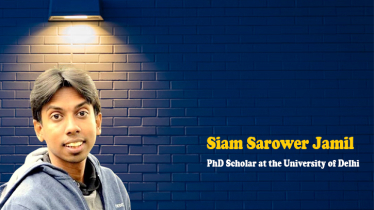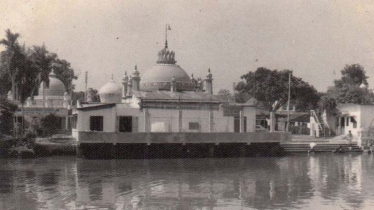
Photo : Messenger
To understand why civilisations collapse, it is crucial to define "civilisation" and "collapse" in this context. Kemp characterises civilisation as "a society with agriculture, multiple cities, military dominance in its geographical region and a continuous political structure." Renfrew and Tainter define collapse as "an abrupt political change and reduction in social complexity that has knock-on effects throughout society, visible to archaeologists in the material culture".
Societies facing threats to maintain their social complexity is not a new phenomenon. The key is whether they can adapt to the pressures or succumb to them. Investigating past collapses reveals that societies were endangered by a combination of factors, which can be broadly classified into conflict, economy, environment, disease among others.
Conflict
Conflict (both internal strife and external attacks) is very undesirable for development, be it infrastructural (economic) advancement or cultural (ideas) progress. To combat conflict, states have mostly used military and force, for which they had to dedicate large amounts of money and employ the best brains, which could have been engaged in the development of other areas. Frequently we see that continuous conflict has resulted in brain drain, which ensures a long-lasting scar on a society or state. A prime example of all these effects can be found in the invasions of Genghis Khan.
Economy
Economic crises cause a multitude of problems, like rising prices, falling exports, increasing economic inequality and decreasing purchasing power. Pervasive corruption, natural disasters like drought and subsequent fall in food production, inconvenient conditions for exporting/importing goods from established trade partners, and hostile neighbours, among other matters, exacerbate crises. Protests erupt and sometimes turn violent. Organised criminal groups emerge and fight to take control of the country. This happened in the Egyptian New Kingdom ~1150 BCE.
Environment
Environmental issues such as temperature changes, floods, droughts and other natural disasters regularly hit ancient civilisations. With the data at hand, the 4.2-kiloyear megadrought seems to have caused major damage worldwide in the 22nd century BCE. The Akkadian Empire experienced a major exodus of refugees from northern Mesopotamia to southern Mesopotamia ~2170 BCE due to increasing aridity and decreasing volume of rainfall, which made agriculture difficult.
According to research, climate change from the Medieval Warm Period (~900 to 1250 CE) to the Little Ice Age (~1250 to 1900 CE) may have caused the Vikings to abandon Greenland ~1450 CE. Sea-level rise and flooding did cause a change in their diet from majority land-based (livestock) to marine-based foods (like seal) due to a loss of arable land. Another research points to drought being a cause behind the disappearance of the Vikings.
Disease
Black Death (1346-1353), caused roughly 75 million to 200 million deaths in Europe and Asia in the Late Middle Ages. In England, the economic deterioration reached its lowest point due to the recurrence of the plague ~1450. Trade disruptions caused due to the Black Death might have been a cause behind the collapse of the Mongol Empire. When the Europeans reached the New World, infectious diseases common to the Europeans affected the Natives. Without any previous exposure, these diseases caused mass mortality of the indigenous people, with some areas experiencing 90% fatality rates. In the 1520s, the Aztecs were ravaged by smallpox as 25% of the populace and the majority of the soldiers were killed. This was a major factor behind the defeat of the Aztecs by the Spanish. Similar effects were seen in Australia, the Pacific Islands and the Hawaiian Islands.
The Case of the Western Roman Empire
At its zenith under Trajan (r. 98-117), the Roman Empire was a formidable power, characterised by territorial expanse, military might, and economic prosperity. However, this golden age was followed by a protracted decline, precipitated by a confluence of challenges.
The division between Eastern & Western Roman empires resulted in a constant tension between the need for two emperors and the scepticism between them. Profligate spending, fuelled by military campaigns and lavish imperial lifestyles, exacerbated the empire's financial woes. Corruption, endemic at all levels, syphoned off vital funds and eroded public trust.
In the 5th century, North Africa was claimed by the Vandals and their piracy in the Mediterranean critically affected Roman trade. During the 200–600 CE period, the Roman Empire experienced climate variability, leading to agrarian issues. Climatic changes caused the migration of the Germanic people and crop failures and helped in the spread of pathogens. Rome faced problems of overcrowding and Romans had unhealthy diets. All these factors helped in spreading endemics: the Antonine Plague (165-180 AD) resulted in the deaths of ~7.5 million people and the Plague of Cyprian (249-262 AD) at its peak reportedly killed 5000 people per day in Rome.
Ultimately, it was a multifaceted interaction of factors that led to the disintegration of Rome. Although military losses and invasions by foreign tribes are often mentioned as basic reasons, it is equally important to note that disintegration from the inside because of fiscal mismanagement, political corruption and social disorder made the union equally frail.
The Modern Civilisation
It is imperative to note that modern nation-states, which are the primary form of governance in the contemporary world, have the shortest life expectancy among all types of political systems. In the 21st century, we face problems of ecological devastation on a major scale, the everlasting threat of apocalypse due to nuclear weapons, economic instability, rising wealth inequality, cultural conflict between the East and West, demographic changes, emerging threats from computer technology, cyber warfare, cutting edge military equipment, to name a few.
Today’s threats are highly complex, less predictable and spread across different regions of the world. Obesity is a major cause of concern and chronic diseases like diabetes and cancer are on the rise. The spread of antimicrobial resistance is particularly telling. The interconnected world, with mounting populations and better transportation, makes sure germs spread efficiently. Temperature changes have negative impacts on agriculture, crime levels and human health. Rising populations have had and are having devastating consequences for the ecosystem. Economic inequality has risen, followed by corruption, and is a cause of social unrest. Violence due to differences in race, religion and ideology has increased, along with terrorism.
Cyber warfare can give non-state actors the ability to effectively fight nation-states and the use of logic bombs can wreak havoc in a nation-state at any time. All of these are interconnected: rising temperatures do result in increased crimes, diversion of freshwater resources can lead to “water wars” in the future and changing population dynamics like migration contribute to cultural conflicts, to name just a few.
All in all, we find that modern human civilisation is in danger of collapse. But the hope is that, as long as humans try to learn from past collapses and devise better and better mechanisms and solutions for the problems, collapse can be kept at bay. According to Kemp, “We know what needs to be done: emissions can be reduced, inequalities levelled, environmental degradation reversed, innovation unleashed and economies diversified. The policy proposals are there. Only the political will is lacking”. The direction of modern civilisation will depend on this political will a lot.
The writer is a student of SFX Greenherald International School.
Messenger/Fameema








